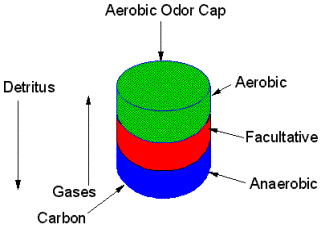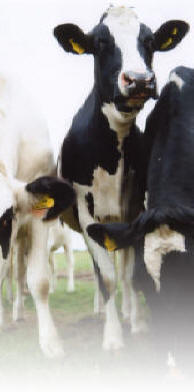FAQs about the Pro-Act Biotech
Dairy System

What are microbes?
How can
Pro-Act's system help?
What
is the basic idea behind the system?
What is
bioaugmentation?
How
does the technology work?
Is your system certified to work with organic farmers?
Is expensive machinery involved?
How
much does it cost?
Still have more questions?
Contact us.
We'd be
glad to help.
What are
microbes?
Microbes are makers or
destroyers. They can promote health or cause disease.
Microbes inhabit almost every niche of the world, from
20 miles beneath the Earth's surface to 20 miles
overhead. They live at temperatures less than -20
degrees Celsius to temperatures hotter than the boiling
point.
Microbes thrive on a huge range of foods
including radioactive materials, oil and toxic wastes.
Every time you walk on the ground you step on billions
of microbes. They (bacteria or fungi) live in the
soil, on rocks, inside roots, buried under miles of
earth, in compost piles, and all over the Earth's
surface. Microbes live in buildings, homes, and schools
and in people.
Certain bacteria produce antibiotics; others live
symbiotically in the guts of animals (including humans)
or elsewhere in their bodies; or, on the roots of
certain plants, often fixing nitrogen gas into a usable
form. Bacteria put the tang in yogurt and the sour in
sourdough bread. Bacteria help to break down dead
organic matter. Bacteria make up the base of the food
web in many environments. Bacteria are of immense
importance because of their extreme flexibility,
capacity for rapid growth and reproduction, and great
age (the oldest fossils known, nearly 3.5 billion years
old, have fossils of bacteria-like organisms).
Not only are there many microbes in soil, there are
many, many different species. Some scientists estimate
that each gram of soil may contain 10,000 different
species of microorganisms! That's more biodiversity in
one gram of soil than all the different types of mammals
in the entire world. That's also more than all species
of bacteria than have been catalogued (around 5,000)!
Each gram of soil may contain up to 1,000,000,000 or
more microbes. That's as many microbes in a single gram
of soil as there are people in all of China! Bacteria
are typically 1-2 um wide and 2-20 um long. Due to their
small size and shape, microbes can be examined only by
using a high power microscope (x1000) and staining
techniques.
Microbes can be further classified:
Aerobic: Requires oxygen to grow
Facultative: Metabolizes with or without oxygen
Anaerobic: Oxygen is inhibitory or even toxic to
these microbes.
By selecting the proper microbes, these zillions of
microbes will also thrive eating the manure of pigs,
cows and other animals in waste lagoons. They eat the
manure gasses and dramatically reduce odor. They eat the
carbon in the sludge, turning the sludge to liquid. They
digest the manure and produce a gentle, fast-acting
fertilizer that has zillions more earth-friendly
microbes.
[top]
How can Pro-Act's
system help?
Many dairies with concentrated
animal feeding operations (CAFO) have less storage volume than they need,
leading to stressed lagoons. Stressed lagoons often accumulate solids, costing
thousands of dollars to agitate and pump. They can give off offensive odors and
gases, endangering the goodwill of neighbors. In addition, there are often more
nutrients in the manure than the available land can accept and still meet the
nutrient management requirements. This excess of nutrients can lead to expensive
disposal problems.
Proper manure waste management can be an ongoing and frequently expensive
problem for dairymen. Our system will reduce odor and liquefy solids while
building a gentle, time released fertilizer. In addition, the nutrients tend to
stratify with the solids, giving the farmer some important options when
applying manure.
[top]
What
is the basic idea behind the system?
Our
patented microbial manure lagoon treatment system
consists of the proprietary aerobic/facultative
microbial mix, growth factors and a surface air diffuser
(normally one diffuser per acre surface area). By
combining the aerobic microbes with our patented surface air
diffuser, we are growing these microbes to be part of a three-stage
system.
The
three-stage system works faster and more efficiently
than one-stage anaerobic digestion.
The
anaerobic microbes in the bottom layer pull the carbon out of
the solids, converting it to water and carbon dioxide.
The facultative
microbes are robust and eat voraciously using the
gases from the anaerobes for a food source, alleviating
stifling manure gasses.
The aerobic microbes act as an
odor cap, and they finish off any gases that get
through the facultative layer.
The droppings from this
digestion process, detritus, fall to the bottom and
fertilize the microbes below. The increased microbial
activity requires more carbon. Manure solids are
the primary carbon.
Our
microbes are naturally occurring soil organisms;
they are the same ones that digest the raw manure when
you put it into the soil. We are performing that
function in storage so when the manure is applied, it's
a gentle, fast-acting, fertilizer that has zillions of
extra earth-friendly microbes.
Equally important to growing microbes is to be sure you
are not killing them with treatments on the slatted
floors. Avoid using anti-microbial cleaners on the
floor. Using Clorox is out of the question. Antibacterial medications that are fed
to animals pass through them and can also have an
inhibitory effect on
the microbes in the manure.
[top]
What is bioaugmentation?
Bioaugmentation is the addition of
pre-grown bacteria to perform a specific remediation
task in a given environment. Simply dumping microbes into the
manure is not bioaugmentation. Successful
bioaugmentation changes the population makeup of the
environment. New
and old microbes work together to form a new workforce.
The workforce thrives in a friendly environment of
controlled pH, temperature and oxygen levels. It’s
critical for microbes to have a balanced diet and the
proper nutrients to ensure good growth and a healthy
population. It also requires the absence of
antimicrobial products, harsh cleaners, copper sulfate,
etc. Finally, the regular addition of new microbes, not
ordinarily found in the waste stream, ensures the
success of our three-stage system.
Bioaugmentation is the mechanism to provide these
skilled workers. A critical part of the success of a
bioaugmentation program is proper application. Because
every system is unique, it is essential that products
are properly applied. Simply dumping microbes into the
manure is not bioaugmentation.
As environmental restrictions tighten, many farmers are
going to be faced with compliance levels that will
seriously challenge the capabilities of their existing
manure and wastewater treatment facilities. Bioaugmentation is the most cost effective solution,
with minimal capital expenditures, the monthly operating
expenses are very competitive.
[top]
How
does the technology work?
To see how our technology works,
let’s take the example of treating an existing waste
lagoon, filled with manure. It been there for some time
and some of the manure has turned to solids,
particularly on the bottom. The solids can also form
islands that protrude from the lagoon.
Remember that we have three kinds of microbes:
Aerobic: Requires oxygen to grow
Facultative: Metabolizes with or without oxygen
Anaerobic: Oxygen is inhibitory or even toxic to
these microbes.
We add our microbes to the lagoon.
In our mix, microbes use nitrogen, carbon and oxygen. The
manure has nitrogen and carbon. We also add growth stimulants to make our microbes grow faster, and we use
our patented diffuser to provide more oxygen and to spur growth. Our
microbes blend into the lagoon that has three layers with the
aerobic on top, the facultative in the middle and the
anaerobic on the bottom. This three-layer system speeds the digestion
of the manure.

The anaerobic layer eats carbon. Manure solids are
primarily carbon. This layer pulls the carbon out of the
solids, converting it to water and carbon dioxide.
The facultative layer eats the gases from the anaerobic
layer, alleviating the stifling manure gases.
The aerobic microbes act as a odor cap and finish off
any gases that get through the facultative layer.
The droppings from this whole process are called
“detritus” and they fall to the bottom and feed the
microbes below.
This whole process liquefies solids, provides a
strong, aerobic odor cap and builds a gentle, fast
acting fertilizer loaded with zillions of earth-friendly
microbes. Also, our microbes are the same ones found in
the earth that digest the raw manure when applied as
fertilizer.
[top]
Is your system certified to work
with organic farmers?
Yes. Organic farmers across the U.S. are already
using our system which works with nature, not against it. We have been
certified by the Midwest Organic Services Association (MOSA).
[top]
Is expensive machinery involved?
Mechanical system suppliers think that manure can be
processed as if it were sewage. They
reason that the more iron and horse power used, the better the end product.
Frequently, they succeed only in making whipped manure. It makes the problem
worse.
Pro-Act’s patented MOO® diffuser, our only mechanical
component, is used to grow aerobic microbes. The aerobic microbes, together with
the anaerobic microbes that are indigenous to the manure, mineralize and
stabilize your manure. They’re not complicated, but they get the job done.
We do recommend the use of mechanical solids separators prior to the manure
slurry going into the lagoon; they help the system
work better.
[top]
How
much does it cost?
Dairy operations can be treated for $12 or less per cow
per year.
Our cost of treatment per animal is far less
than the more complicated capital intensive
alternatives.
We require no major infrastructure change to the
farm and a minimum capital outlay - produces a quick
payback.
Our products are safe, economical and easy to
use.
See how Pro-Act
helps you unleash the profit.
[requires Adobe Acrobat Reader.
Download for free.]

Certain
farms and organizations may qualify the Pro-Act Helps™.
[top]

